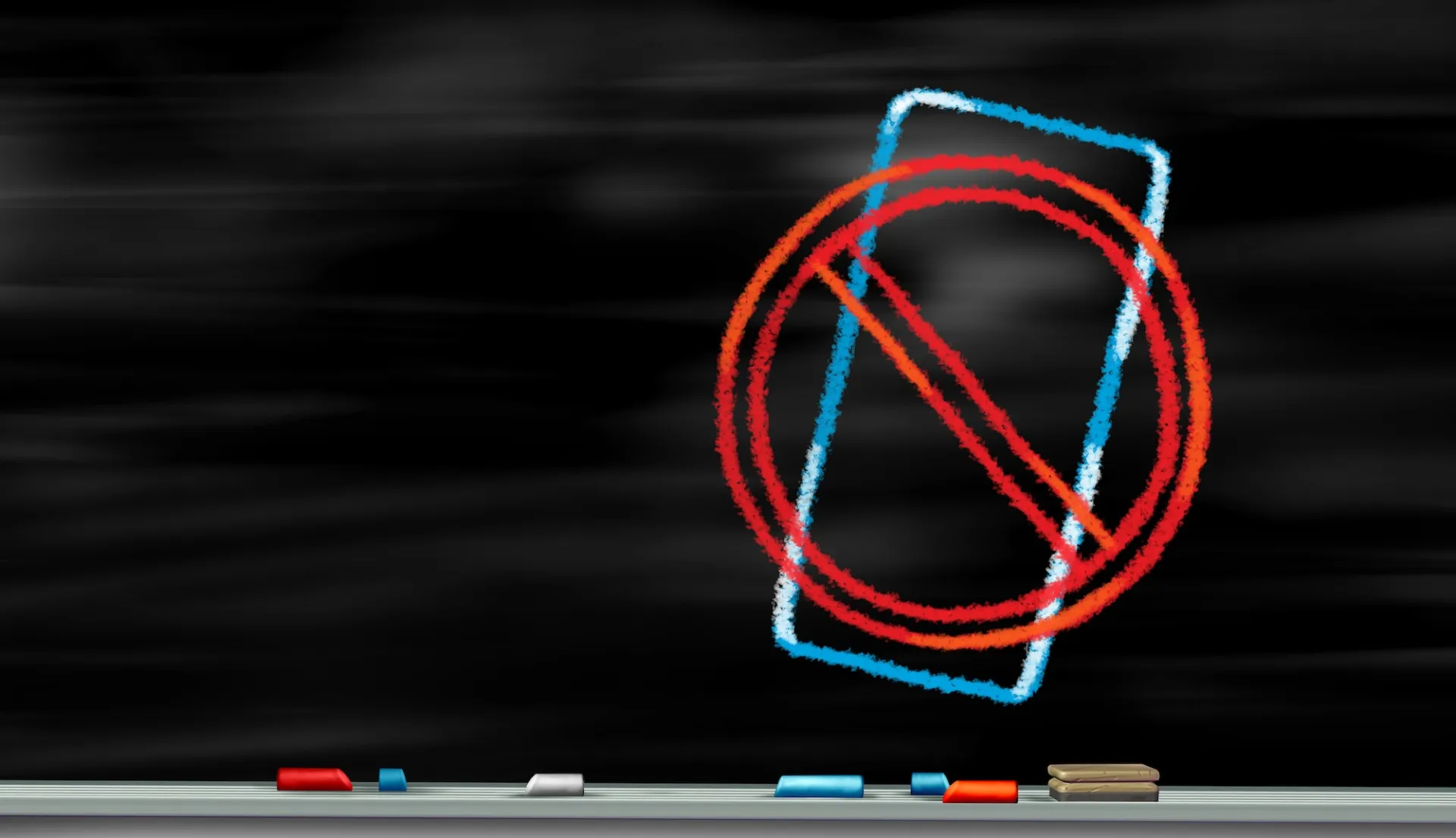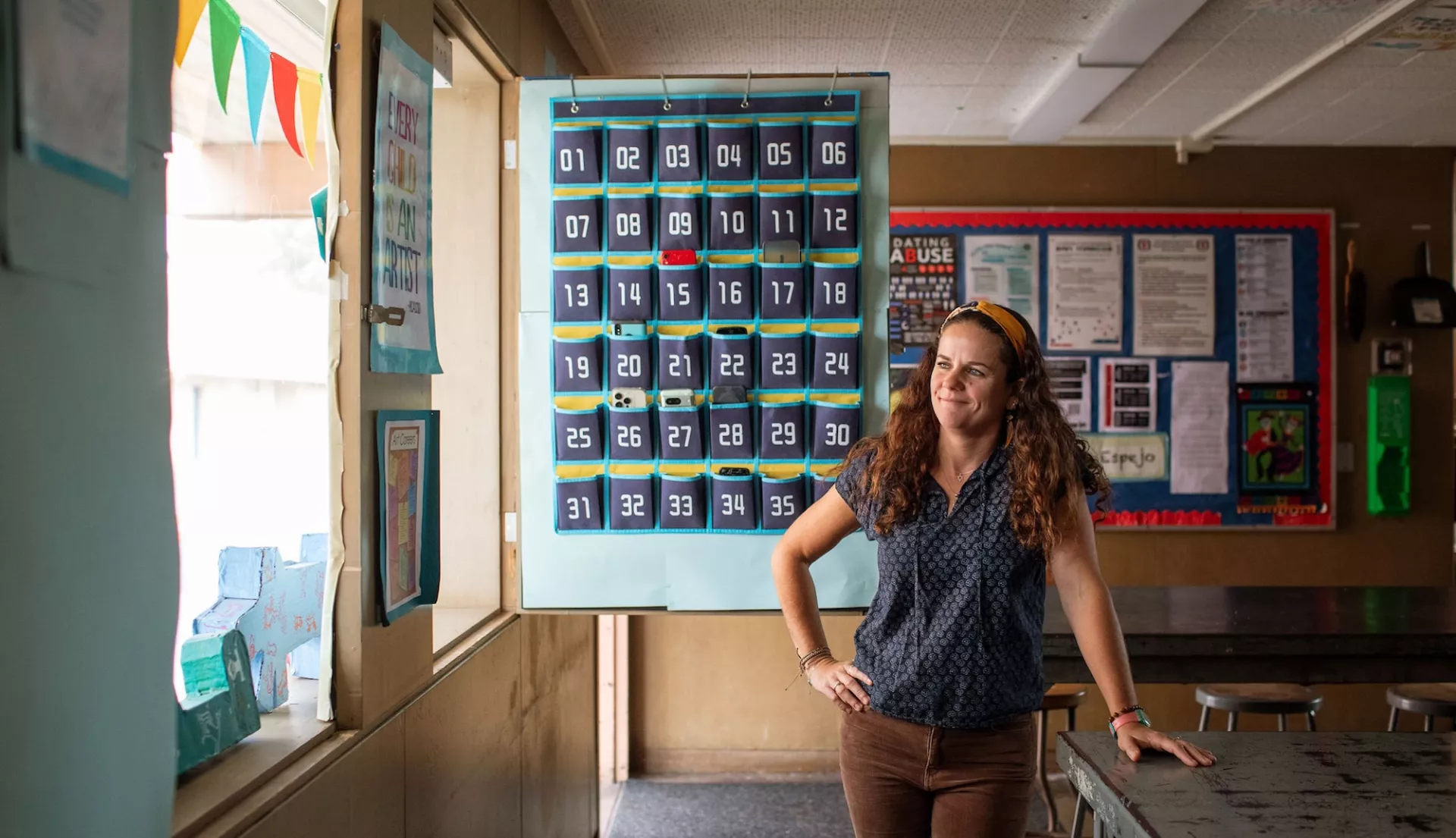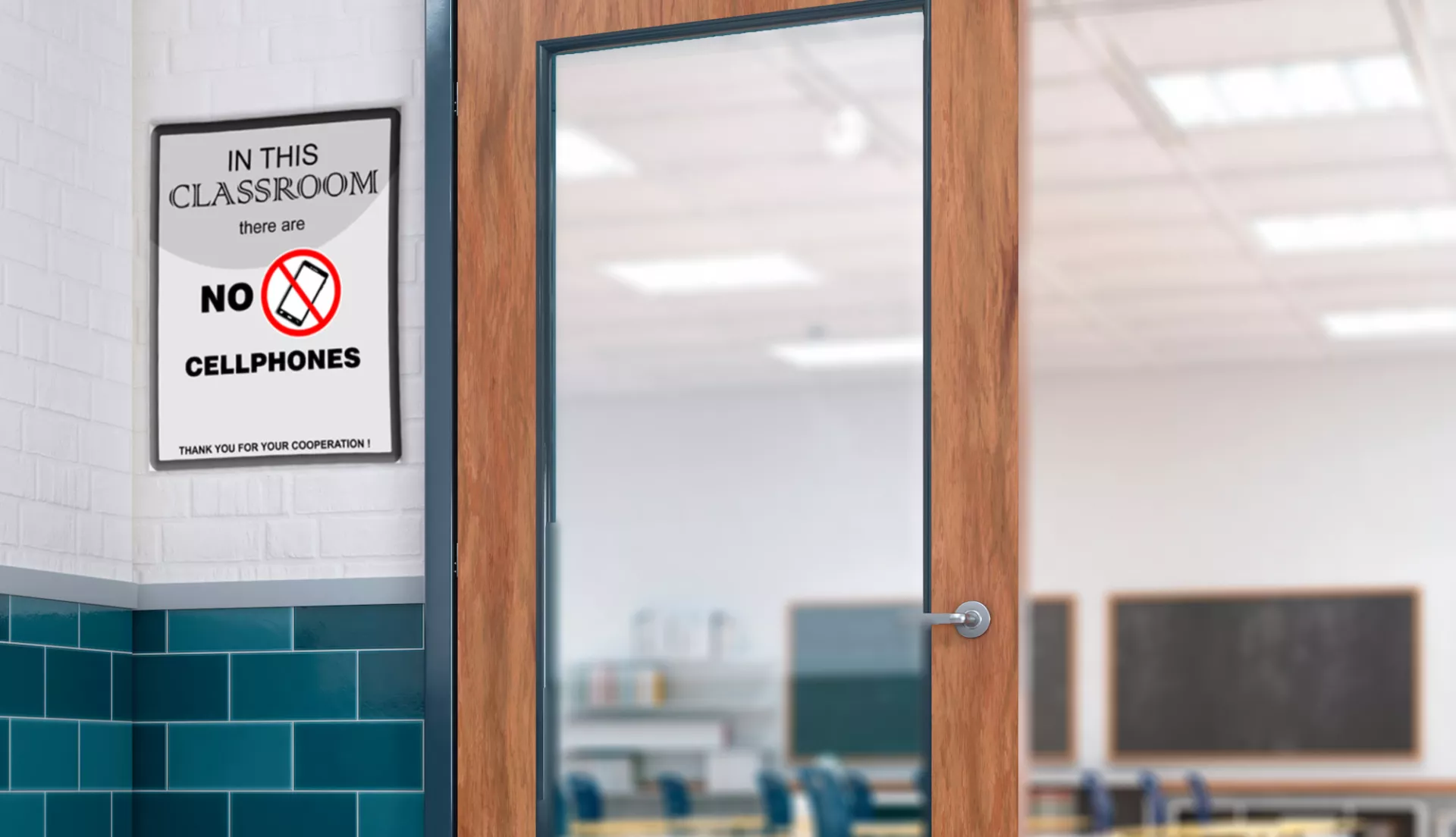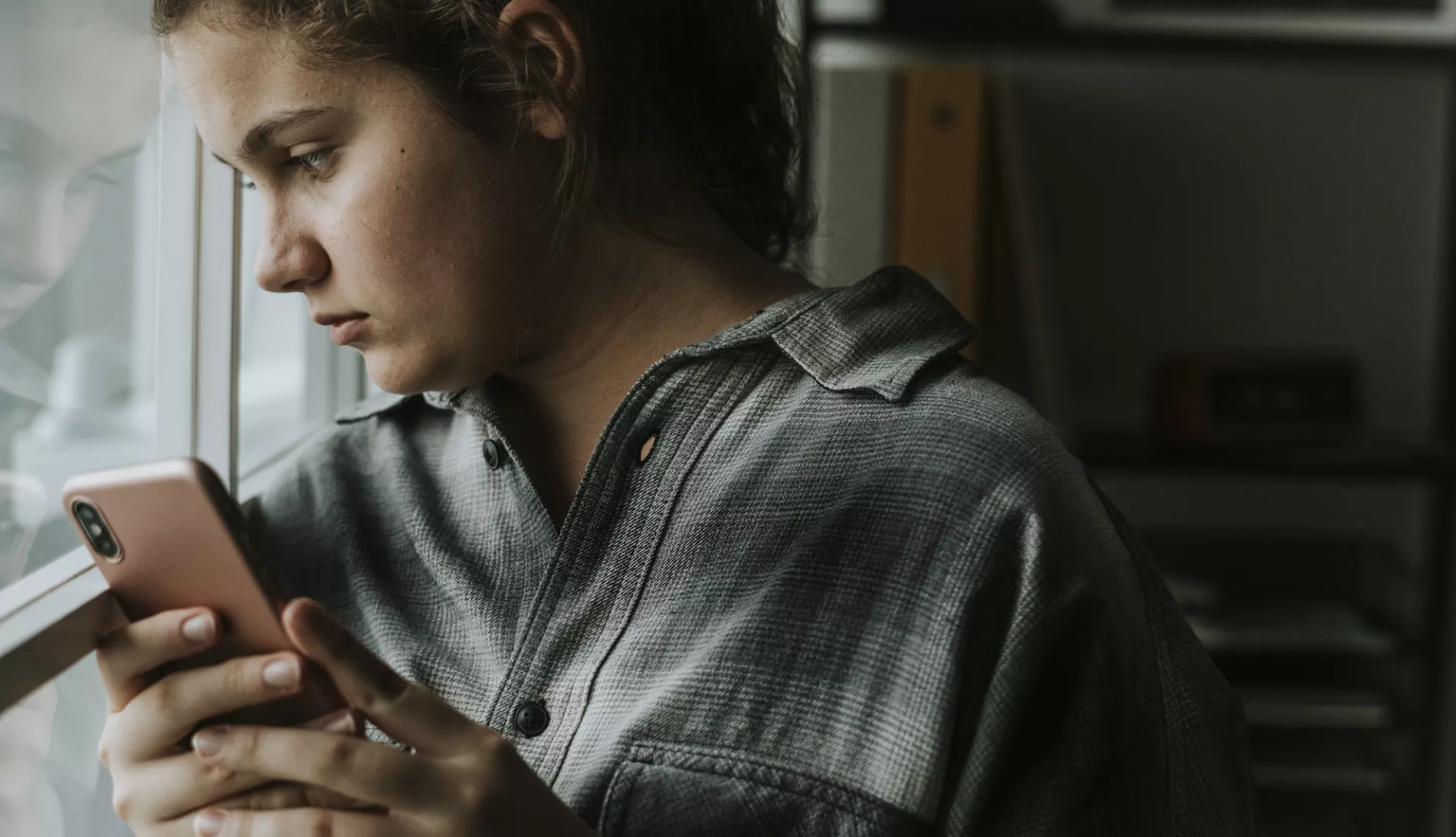When the FOCUS Act, which prohibits student use of cellphones during the school day, passed in Alabama, Jonathan Buchwalter’s hopes were high.
A Marine veteran and author, Buchwalter teaches high school social studies in Tuscaloosa County. “I’ve been in the classroom since 2017 and half my energy was spent managing phones or dealing with phone-related behavior. These kids are addicted and it got worse since COVID. So, I was looking forward to this new law because I knew it would have an impact.”
The FOCUS Act went into effect for the 2025-26 school year. On the first day of school, the results in Buchwalter’s classroom were immediate and they've stuck: Less behavior issues. Greater engagement. Stronger academic performance.
After that first day, Buchwalter recorded his impressions in a TikTok video, which soon went viral, attracting more than 2 million views.
“Today, all of my students—100 percent of them—took notes in my class, did their assignments, asked for help when they got stuck and turned it in,” he said in the video. “And then when they were done, they … talked to each other.”
The impact wasn't limited to the classroom. Students were socializing more in the lunchroom. The school library saw more activity.
“Was it this easy of a solution the whole time?” Buchwalter wondered. “I've been pulling my hair out for eight years!”
Momentum Behind Bans
The constant distractions generated by cellphones obviously are not the only drivers behind student behavior issues and academic underperformance. But for Buchwalter and educators across the country, the impact of these devices on their classroom—and on their students’ mental health—could no longer be ignored. A 2024 NEA survey found that 90 percent of teachers support banning cellphones during instructional time and 75 percent favor so-called “bell-to-bell“ bans.
Over the past few years, school districts and lawmakers have responded, passing new policies and laws that curb the use of cellphones during the school day.
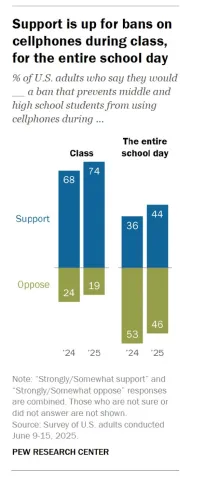

Twenty-six states now have laws or policies banning or restricting cellphone use in K-12 classrooms. Twenty-two of these laws were enacted in 2025. Other states are mandating that school districts adopt some kind of cellphone policy. Educators and their unions have advocated for tougher restrictions on cellphones but have emphasized the need for strong and consistent enforcement mechanisms.
Public support for limiting cellphone use in schools is growing. According to a 2025 Pew Research Center survey, 74 percent of U.S. adults support banning cellphones in middle and high schools during class. Support for extending bans throughout the entire school day is lower but also ticking up—44 percent are now in favor, compared to 36 percent in 2024.
State laws have different provisions but most leave it up to the district on how they enforce these measures. Usually schools can carve out some exceptions for emergencies, to accommodate health needs, and even for some instructional purposes under the supervision of the teacher. In Alabama, schools can decide how to store the devices.
Schools in Tuscaloosa County, for example, allow students to keep their phones in their backpacks or back pockets—a so-called “no-show” policy—instead of central storage locations or Yondr pouches. “We struck up a healthy compromise to help reduce parents’ concerns about access,” says Buchwalter.
The Evidence So Far
With most of these new cellphone policies not even a year old, tracking the long term effect of limiting cellphones in schools will take some time, but recent research suggests educators across the country share Buchwalter’s enthusiasm.
A new national survey of more than 20,000 public school educators by Phones in Focus, a nonpartisan research initiative, found that stricter cellphone policies in school are linked to less in-class phone use and higher teacher satisfaction.
“So far two patterns stand out: The stricter the policy, the happier the teacher and the less likely students are to be using their phones when they aren’t supposed to,” said lead researcher and psychologist Angela Duckworth.
The survey also found that “strict storage rules,” such as requiring students to leave phones in hallway lockers or Yondr pouches, led to better outcomes. Still, according to the survey, nearly half of schools use a “no show” policy. This type of policy does not perform as well as more restrictive policies.
A working paper released in October by the National Bureau of Economic Research found modest but real test score improvements in an urban Florida school district in the second year after a cellphone ban went into effect. The researchers, however, also noted an increase in student suspensions in the first year, followed by a decline in the second year.
A Honeymoon Period?
One month after posting about the first day of school under the new cellphone ban, Buchwalter returned to TikTok to provide an update. Were the positive results holding up?
Yes—but with a few caveats.
“What we're seeing is a bit more behavior issues emerge, but still well below where they were before," he reports. “I'm still taking up phones in class, so are my colleagues. Kids are kids and they will try to break new rules. That's expected.”
It’s the same with academic performance, he says. “But even my students who are struggling are still taking notes and less distracted than they were before. So, are we still at a net positive? Absolutely.”
Buchwalter says the ultimate success of the policy depends on the ongoing support from school and district leaders.
“That’s what makes any school policy effective. But they know that distractions and disruptions in school prevent kids from doing well and graduating. That's what cellphones are,” he says. “I wouldn't want to work for a school district that doesn’t have these measures in place. I don't want to go back.”
